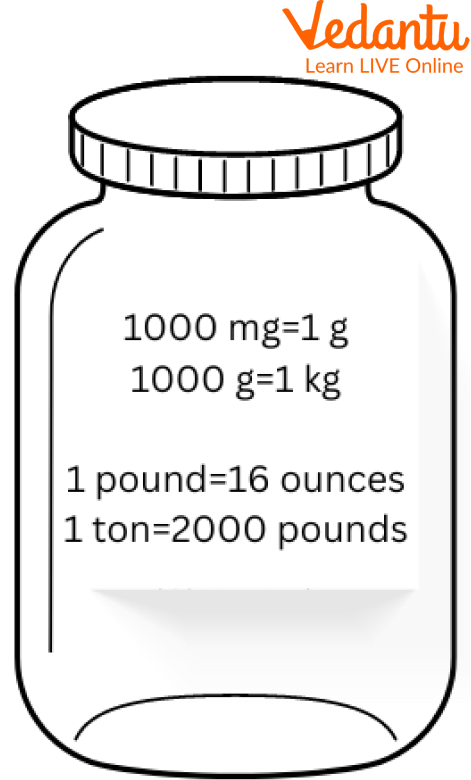




How to Calculate and Apply Absolute Tone Km in Problems
Units of measurement are basically more, less, and comparable concepts. It is important for kids to understand that this glass contains more milk than another, that this field is larger than another, and that this thing weighs more than that.
Children have intuitive understandings of more, less, and the same from a very young age, even in infancy, even if they may not know these words and, of course, cannot speak about them. It is absolutely important to learn about the different units of measurement used in weight and length, and also solve some questions to learn better. So, let’s begin learning “what is absolute tone km”.
Concept of Absolute Tone Km
The accepted unit for measuring absolute units is the absolute tone-km. The total number of tone-km (or quintal-km, tone-miles, etc.) arrived is determined by multiplying the distance by the weighted sum carried to arrive at absolute (weighted average) units. Distance x respective weight equals absolute tone-km.
The common unit of measurement for commercial units is the commercial ton-km. Multiplying the average weight carried with the total distance travelled yields commercial (simple average) units.
Measuring Units
Finding a number that represents the quantity of anything is called measurement. An accepted quantity that is used to represent a physical quantity is called a measurement unit. Let's learn about some of the standard units used to measure physical quantities.
Length
The term "length" refers to a thing's overall length.
Millimetre (mm)
It is used to measure very small thicknesses or lengths.
For example, Pencil tip length
Centimetre (cm)
It is used to measure short distances.
For Example, Pencil length
Metre (m)
It is used to measure long distances.
For instance, the size of a classroom.
Kilometres (km)
It is used to calculate exceptionally lengthy distances or lengths.
Example: The separation of two locations.
Inch (in)
It is used to establish a small object's length.
Example: A bed's length.
Feet (ft)
It is used to calculate heights and short distances.
Building heights, for instance.
Mile
It is used to determine large distances.
Example: The separation of two locations.

Units of Length Measurement
Weight
The amount of matter that makes up an item determines its weight and it is calculated by a weighing machine.

Weight Machine Device
Milligrams (mg)
It is used to gauge extremely light objects.
like in medicines
Gram (g):
It is used to measure tiny objects.
such as weighing potatoes, spices, etc.
kilo (kg):
It is used to gauge the weight of objects.
Example: Body weight
Ounce (oz) :
It is used to calculate minor amounts.
For example, bread.
Ton:
It is a unit of measurement for significantly heavier objects.
such as trucks

Units of Weight Measurement
Questions to Solve and Learn
Q 1. How do you convert 2400 Km to miles?
Ans. As we know that 1 Kilometre (Km) = 0.621 Miles,
To Calculate 2400 Kilometre into Miles,
=2400 x 0.621
=1491.29 Miles
Q 2. How many Kilograms equals 26780 Grams?
Ans. 1 kg = 1000 Gm as we already know,
26780 Gm = 26780/1000 Kg
26780 Gm= 26.78 Kg.
Mountain Ranges and Their Spreads in Units of Measurement
Who doesn’t love visiting the mountains? Let’s learn about some of the greatest mountain ranges and their spread via Units of measurement to understand the applications better.
(Image will be uploaded soon)
Mount Everest, The Highest Mountain Range
Honshu
The largest of Japan's four major islands, it is situated between the Pacific Ocean's eastern coast and the Sea of Japan (west). Its width fluctuates substantially and it creates a northeast-southwest arc that measures roughly 800 miles (1,287 km).
Himalayas
The mountain range includes Mount Everest, the highest peak in the world, as well as over 100 other Himalayan summits that climb above 7,300 metres (24,000 feet) of sea level.
Karakoram
Karakoram is the location of the world's highest closely spaced summits towering over 7,620 m (25,000 ft) from sea level, including the globe's second-highest peak, K2.
Mountains of Kunlun
The Kunlun Mountains, which run over 2,000 km (1,250 miles) in central China, are the widest chain of mountain ranges in Asia. It serves as the Tibetan Plateau's northern boundary.
Summary
In this article, you learned about units of measurement and absolute tone km. Absolute ton-kms are used to measure absolute units. It is a standard unit of measurement. Units of measuring length and weight are discussed in the article with help of some sample questions of conversion. Examples of the range of various mountains (Natural/Environmental examples of length unit measurement) are taken. Information and range of Honshu, Himalayas, Karakoram, and mountains of Kunlun are provided in the last.
FAQs on What Is Absolute Tone Km in Maths?
1. What is meant by 'absolute tonne-km' in cost accounting?
Absolute tonne-km is a composite unit of measurement used in the transport industry to calculate the total work done by a vehicle. It accurately reflects the cost of transporting goods by considering the specific weight carried over each distinct segment of a journey. It is calculated by multiplying the weight of the goods (in tonnes) by the distance travelled (in kilometres) for each individual trip leg and then summing them up.
2. What is the formula used to calculate absolute tonne-km?
The formula for calculating absolute tonne-km is based on the sum of work done in each part of a journey. The formula is: Absolute Tonne-km = Σ (Weight Carried on Each Leg × Distance of Each Leg). This means you calculate the tonne-km for the first leg, the second leg, and so on, and then add all these values together for a final, precise figure.
3. Can you provide a simple example of how to calculate absolute tonne-km?
Certainly. Imagine a truck starts from City A with 10 tonnes of goods and travels 100 km to City B. In City B, it unloads 4 tonnes and carries the remaining 6 tonnes for another 50 km to City C. The calculation would be:
- Leg 1 (A to B): 10 tonnes × 100 km = 1,000 tonne-km
- Leg 2 (B to C): 6 tonnes × 50 km = 300 tonne-km
The total absolute tonne-km for the entire journey is 1,000 + 300 = 1,300 tonne-km.
4. How does 'absolute tonne-km' differ from 'commercial tonne-km'?
The main difference lies in the method of calculation and accuracy.
- Absolute Tonne-km: It is a precise measure calculated by multiplying the actual weight by the actual distance for each segment of the journey. It is more accurate for costing when the load varies.
- Commercial Tonne-km: It is an average-based measure. It is calculated by multiplying the total distance of the journey by the average load carried. It is simpler to calculate but less accurate than the absolute method.
5. Why is using the absolute tonne-km metric important for a transport business?
Calculating absolute tonne-km is crucial for several reasons. It allows for highly accurate cost allocation for each part of a trip, which is vital for profitability analysis. This precision helps in setting competitive and fair prices for customers, especially on routes with multiple pick-ups or drop-offs. It also serves as a better measure of operational efficiency.
6. In which specific business scenarios is the calculation of absolute tonne-km most critical?
The absolute tonne-km method is most critical in scenarios where the load carried by a vehicle changes frequently during a single trip. Key examples include:
- E-commerce and Courier Services: Where a delivery van makes multiple stops, unloading parcels at each location.
- Goods Transport with Partial Unloading: A truck carrying raw materials to different factories along a single route.
- Public Bus Services: Where the 'passenger-km' (an equivalent concept) changes continuously between stops.
7. Why would a company choose to use the simpler 'commercial tonne-km' if 'absolute tonne-km' is more accurate?
A company might prefer commercial tonne-km for its simplicity and ease of calculation. When a vehicle carries a uniform load for the entire journey, or when minor variations in load are not significant, the commercial method provides a quick and reasonable estimate. It requires less detailed data collection (just total distance and average load), making it more practical for large-scale, long-term operational planning where precision to the level of each trip segment is not required.
8. What is a common mistake students make when calculating absolute tonne-km for an exam problem?
A very common mistake is to confuse the formula with that of commercial tonne-km. Students often calculate the average weight carried across the entire journey and multiply it by the total distance. This is incorrect. For absolute tonne-km, you must resist averaging the weight and instead calculate the tonne-km for each individual leg of the journey separately before summing them up.















